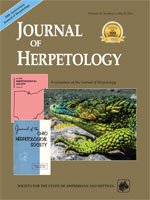Microhabitat use is an important aspect of an organism's niche, often influencing both intra- and interspecific interactions such as competition. To reduce competitive interactions, species may shift their behavior when in sympatry to gain greater access to resources, resulting in patterns of habitat partitioning. Previous studies have described structural microhabitat partitioning in Phelsuma geckos with the likely cause being interference competition. Such interference competition also may lead to temporal microhabitat partitioning. We investigated the presence of temporal habitat partitioning in Phelsuma geckos from Mauritius and the relation of partitioning to competition. We found temporal variation in microhabitat use for Mauritian Phelsuma. However, this variation was not clearly associated with the presence of other focal Phelsuma species, suggesting competition may not be responsible for the observed pattern. Temporal habitat partitioning in Mauritian Phelsuma geckos may be attributable to historical competition or other factors such as thermoregulation, food availability, or predator avoidance. We encourage future studies to investigate the mechanisms of temporal microhabitat variation.
How to translate text using browser tools
1 March 2016
Temporal Variation in Structural Microhabitat Use of Phelsuma Geckos in Mauritius
Travis J. Hagey,
Nik Cole,
Daniel Davidson,
Anthony Henricks,
Lisa L. Harmon,
Luke J. Harmon
ACCESS THE FULL ARTICLE

Journal of Herpetology
Vol. 50 • No. 1
March 2016
Vol. 50 • No. 1
March 2016




